Stud Conversion in KE2 Corolla
In ke20, ke25 and ke26 Toyota Corolla with 4x110mm stud pattern, there is limited options when it comes to wheel selection. The answer is to convert the stud pattern to 4x114.3mm (4x4.5"). TE27 already come with this stud pattern.
For the front: a KP61 Starlet front hub will bolt on. You may need to swap the original ke2 disk to the kp61 hub, as the KP disk center has a slightly larger diameter which contacts the Corolla caliper.
For the rear- ke3 Corolla axles and drums can bolt into the ke2 diff housing if you shave 5mm off the end of the axle spline and also use the ke3 drum. This mod will add 20mm total to the rear track width. The backing plate and brake shoes stay unchanged.
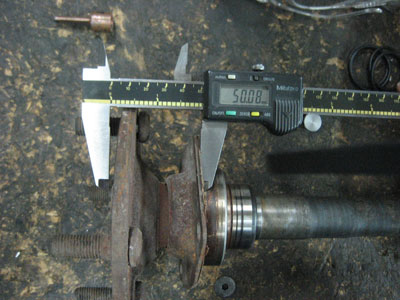 |
ke20/ke25/ke26 axle sits 50mm out from the diff housing (including the drum).
ke3 axles are around 60mm from the diff housing. |
To keep the original diff width.. redrilling of the new stud pattern into the original axles and drums is required.
Step 1 : Redrill the drum brakes.
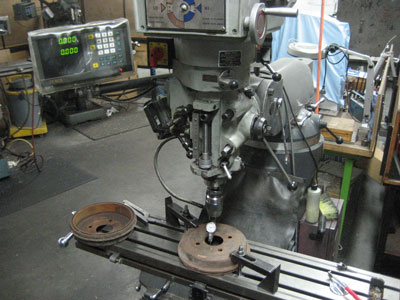 |
File off any rust around the center hole and also on the inner edge so it sits flat on the table.
Rotate the drum so that the original stud holes are horizontal with each other (see pic). This does not have to be perfect.
Clamp the drum down firmly on the mill table using finger clamps
Clock up the center hole using a DTI and 'zero' the digital readout if you have one. (or 'zero' the table traverse handles). |
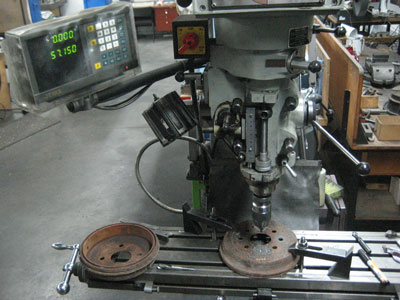 |
Now you have a center point. You can now pitch out the stud hole coordinates. Half of 114.3mm is 57.15mm.
So wind table up, down, left and right to 57.15 and drill your hole at each position. |
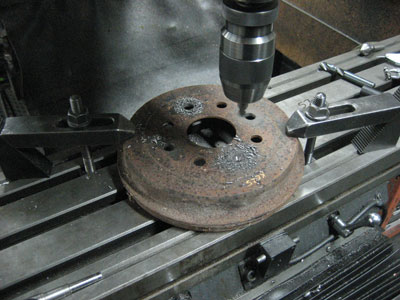 |
Center drill first, then a 14.5mm drill to finish.
A pair of drums shouldn't take more than 1/2 hr from start to finish. |
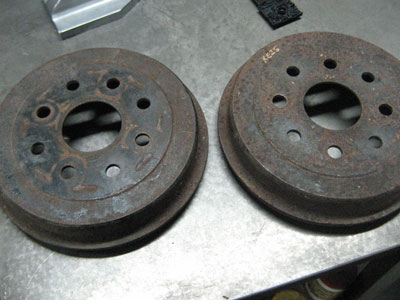 |
Use a file or deburring tool to chamfer the inside edge of the new holes.
You now have multi-stud drums |
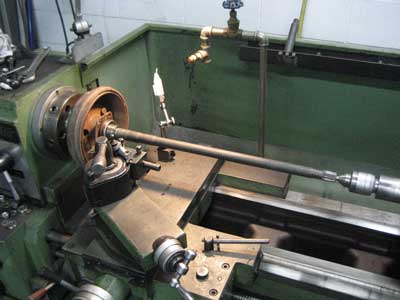 |
Drum getting a skim on a lathe using an old axle between centers. |
Step 2 : redrill the axles.
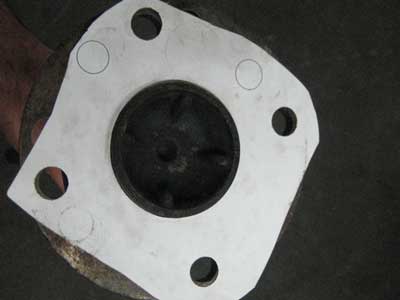 |
For safety reasons, it is best to have the original stud holes welded up and machined flat. If the car is to be certified, check with your certifier as to what is required before proceding.
For ease of stud positioning, i've drawn, printed and cut out a stud layout. Then used this to see where the best position of the studs are. If your original stud holes have been welded, then redrilled in a similar position as the originals is good. If not welding (weaker) then in between the original studs and the socket holes is the only place that'll fit. Ive also used the printout to position the axle with the holes to be drilled horizontal to each other, before clamping it down. |
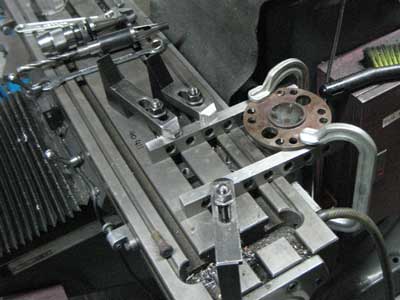 |
Procedure:
I used two large parallels clamped to the milling machine table with two finger clamps each, and overhanging the top side. The axle flange is then clamped between the parallels with the axle shaft dangling below. (the back side of the flange has a machined face to sit on). The head of the mill needs to be rotated around so that all 4 holes can be drilled without the axle contacting the Y-axis slide. A similar procedure as redrilling the drums (shown above) is used to redrill the axle. But use a pilot drill before the final size drill for accuracy. The stud hole diameter is crutial so that the studs are an interferrence fit. These particular studs had a 14.2mm diameter knurl so holes were drilled 14.0mm diameter. 4x114.3mm pattern is drilled 40.41mm along X and Y axis (so that they cleared the parallels).
ie:
X-40.41, Y40.41
X-40.41, Y-40.41
X40.41, Y-40.41
X40.41, Y40.41
|
Back to 'Tech'
Home



